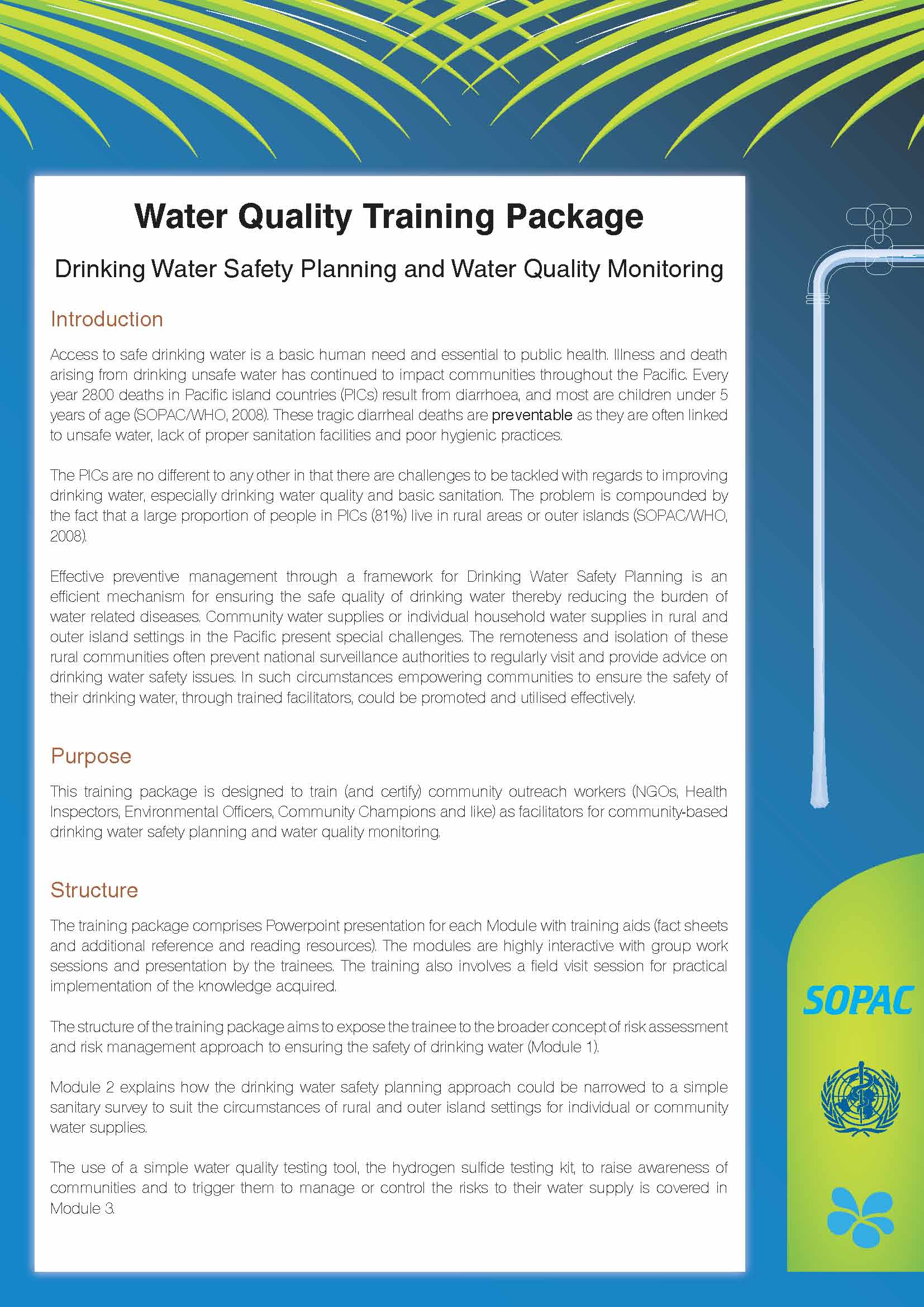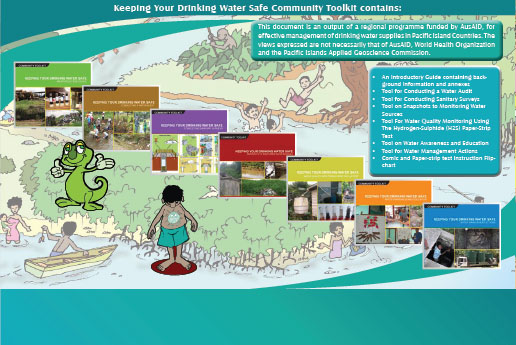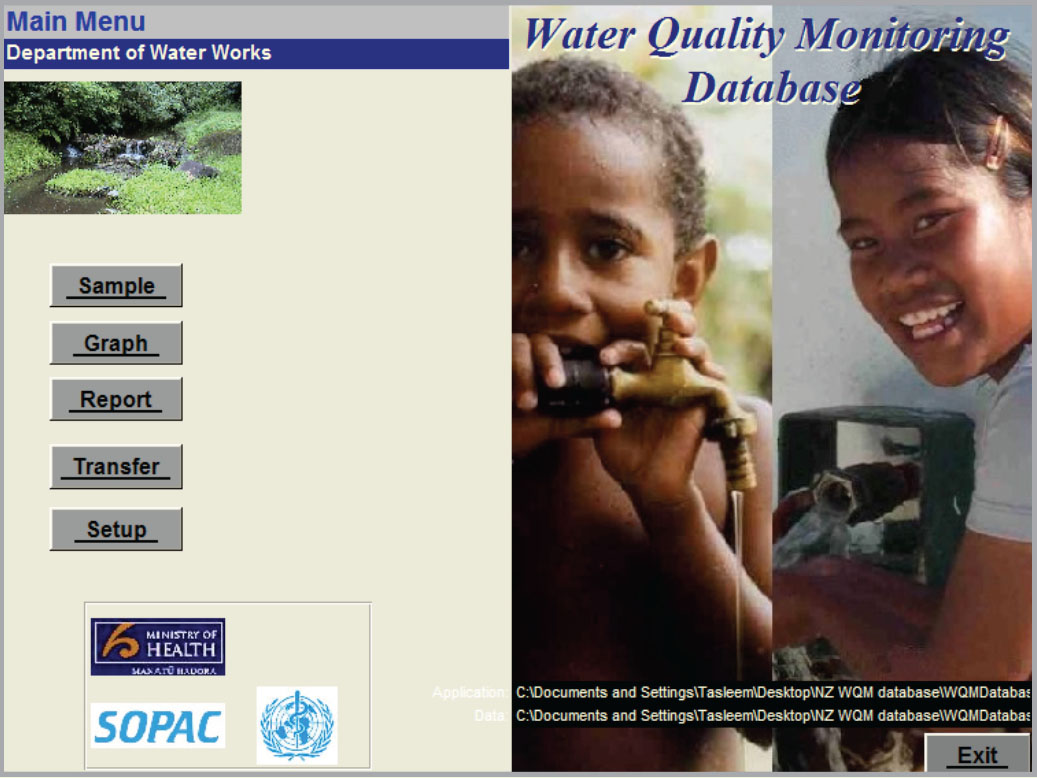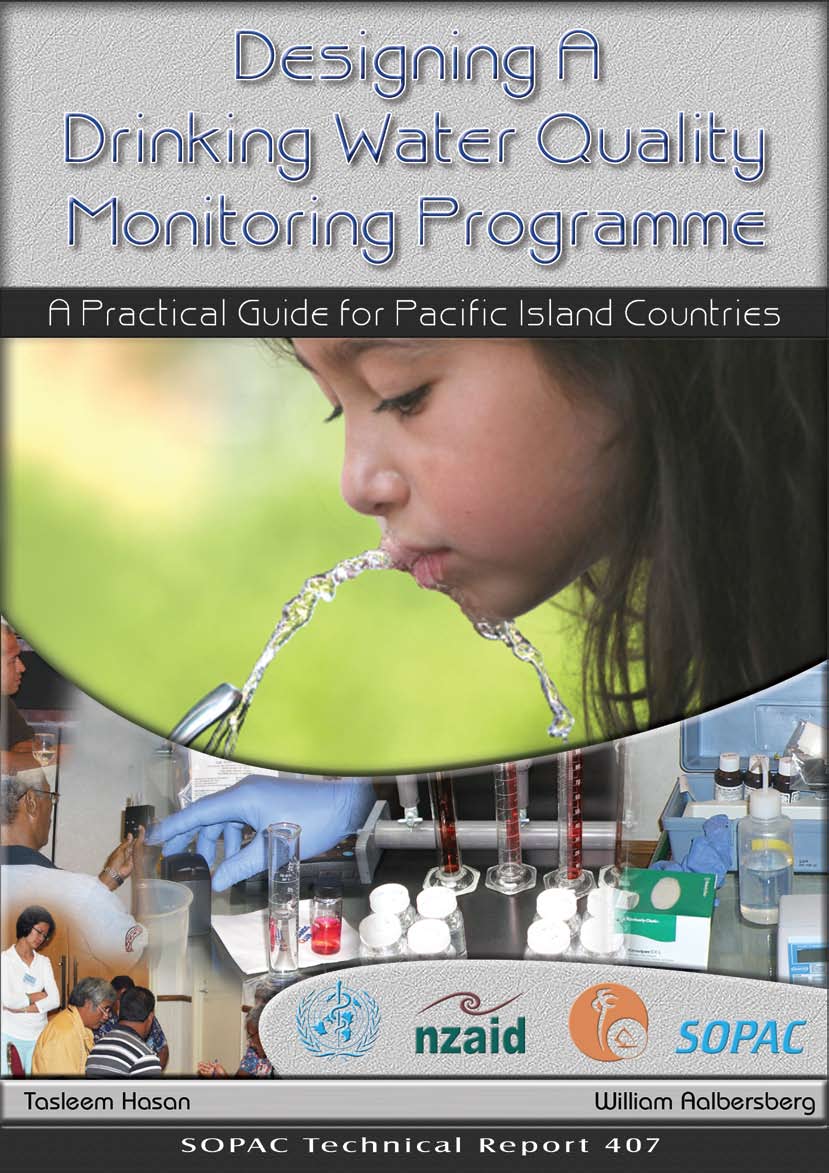Water Quality Training Package
Water Quality Training Package Water quality training package- "Drinking Water Safety Planning and Water Quality Monitoring". (2010) The training package is designed to train (and certify) community outreach workers (NGOs, health inspectors, environmental officer, community champions and like) as facilitators for community based drinking water safety planning and water quality monitoring. For further information email Kamal Khatri

Keeping your Drinking Water Safe: A Community Toolkit
A low-cost alternative test for bacteria to reveal possible faecal contamination in drinking water which is simple and easy to interpret is the hydrogen sulfide (H2S) paper-strip test or the PathoScreen test. The test is well suited for monitoring drinking water systems in rural communities and outer islands where regular laboratory-based water quality testing is not possible.
The following modified sanitary survey forms (English/Marshallese) can be downloaded on the following links:

Best Practices Guide for Water Laboratories
The principal function of a water testing laboratory is to produce high quality data that are accurate, reliable and adequate for the intended purpose. Important decisions are made on data that are produced by laboratories. This guide explains best practices that can be employed by water testing laboratories to produce high quality data, even in the absence of accreditation or certification.

Water Quality Database
The electronic water quality database developed under WQM is intended to assist participating laboratories improve their data management. The database is user-friendly, provides useful tool for data interpretation to prompt appropriate follow up action, allows easy electronic storage and retrieval of data, graphs data to show trends in time to detect problem areas, allows data comparison to national standards or international guidelines and provides a tool to promote data sharing between agencies. Further support through training of participating laboratories in the use of the database will be provided to improve their data management capacity.

Designing a Drinking Water Quality Monitoring Programme- A Practical Guide for Pacific Island Countries
Contamination of drinking water is a significant concern for public health throughout the world. Microbial hazards make the largest contribution to water-borne diseases in developed and developing countries. In addition, chemicals in water supplies can cause serious health problems, whether the chemicals are naturally occurring or derive from sources of pollution. It is important for Pacific Island Countries (PICs ) to identify, prioritise and analyse water quality parameters that are of greatest risk to human health. This will ensure that viable and useful information on the status of drinking water quality is achieved within the existing resources (budget, staff and laboratory capacity). Pleas click on the guide below to access the full version of the guide.


















